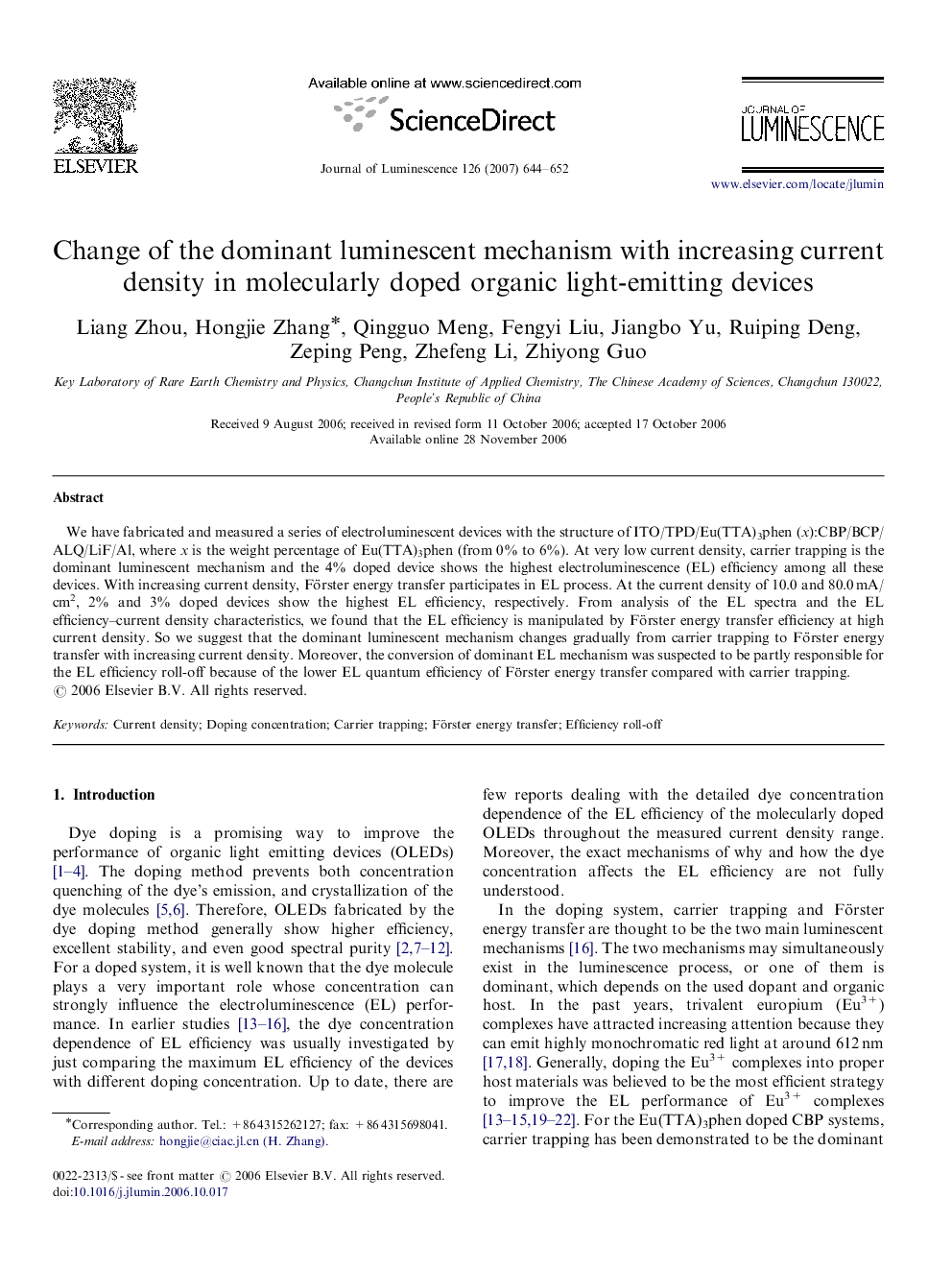| Article ID | Journal | Published Year | Pages | File Type |
|---|---|---|---|---|
| 5403384 | Journal of Luminescence | 2007 | 9 Pages |
Abstract
We have fabricated and measured a series of electroluminescent devices with the structure of ITO/TPD/Eu(TTA)3phen (x):CBP/BCP/ALQ/LiF/Al, where x is the weight percentage of Eu(TTA)3phen (from 0% to 6%). At very low current density, carrier trapping is the dominant luminescent mechanism and the 4% doped device shows the highest electroluminescence (EL) efficiency among all these devices. With increasing current density, Förster energy transfer participates in EL process. At the current density of 10.0 and 80.0Â mA/cm2, 2% and 3% doped devices show the highest EL efficiency, respectively. From analysis of the EL spectra and the EL efficiency-current density characteristics, we found that the EL efficiency is manipulated by Förster energy transfer efficiency at high current density. So we suggest that the dominant luminescent mechanism changes gradually from carrier trapping to Förster energy transfer with increasing current density. Moreover, the conversion of dominant EL mechanism was suspected to be partly responsible for the EL efficiency roll-off because of the lower EL quantum efficiency of Förster energy transfer compared with carrier trapping.
Keywords
Related Topics
Physical Sciences and Engineering
Chemistry
Physical and Theoretical Chemistry
Authors
Liang Zhou, Hongjie Zhang, Qingguo Meng, Fengyi Liu, Jiangbo Yu, Ruiping Deng, Zeping Peng, Zhefeng Li, Zhiyong Guo,
